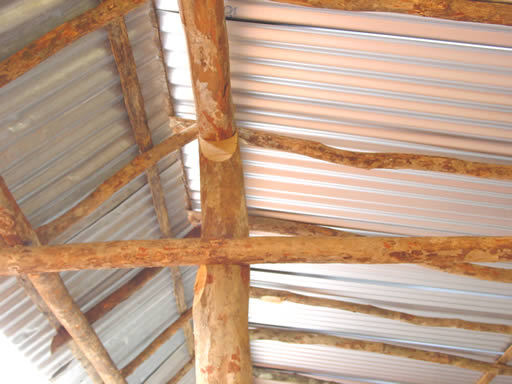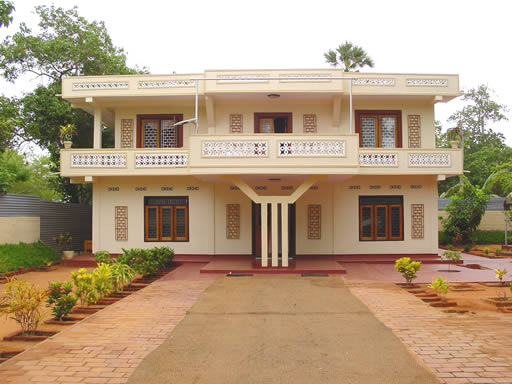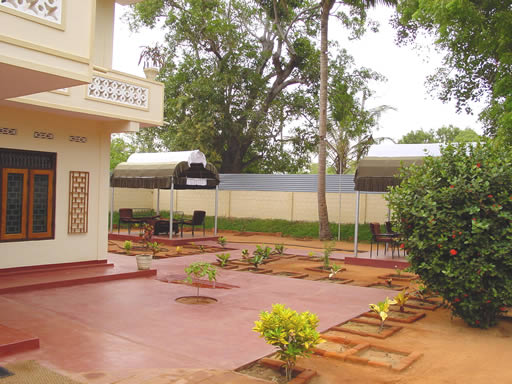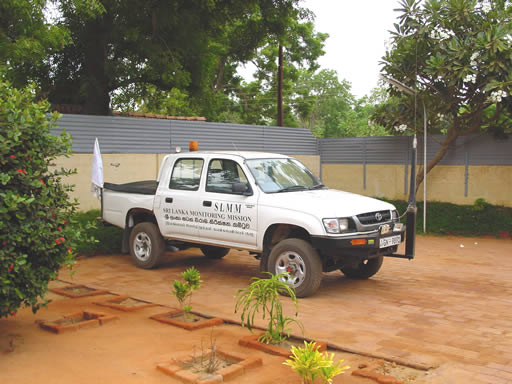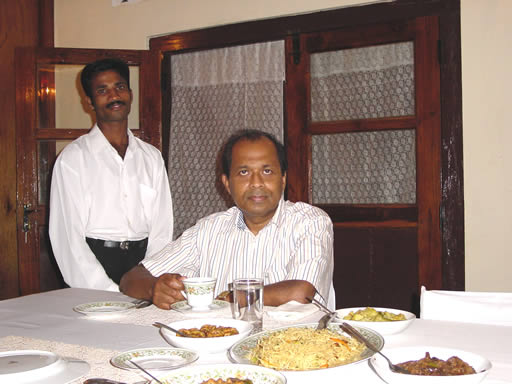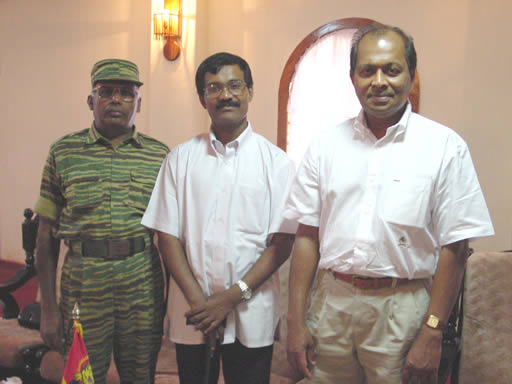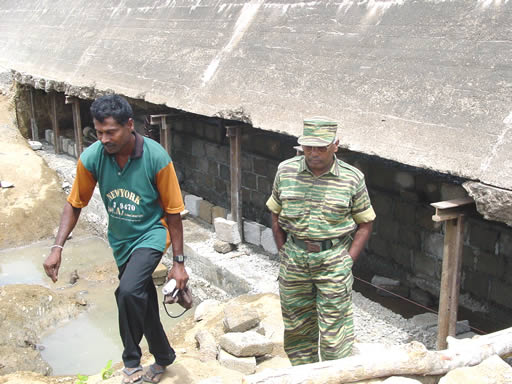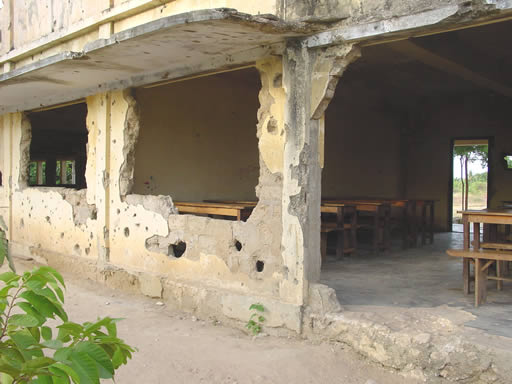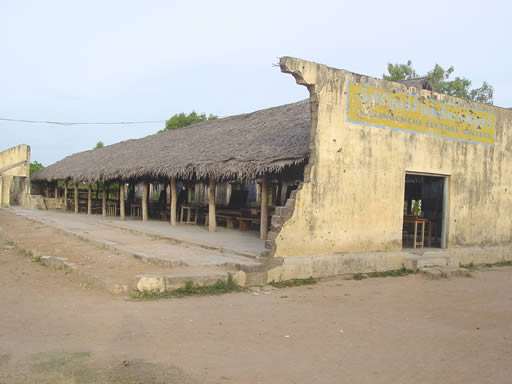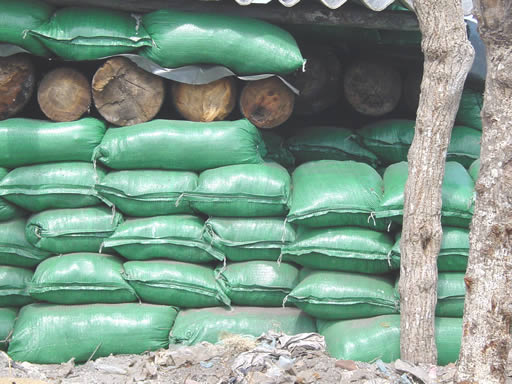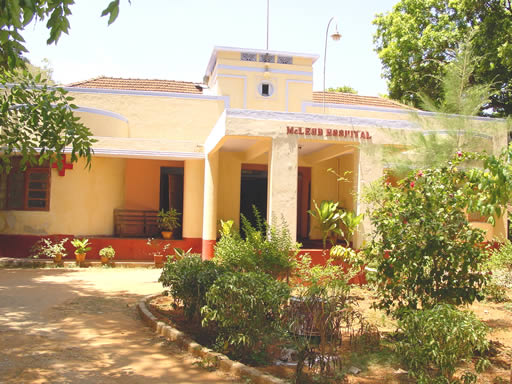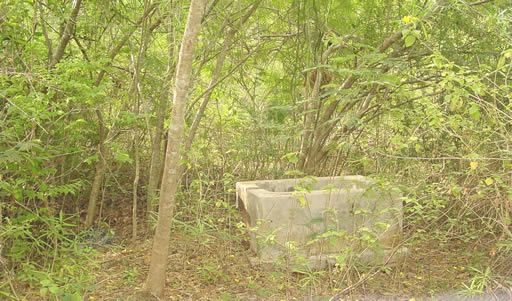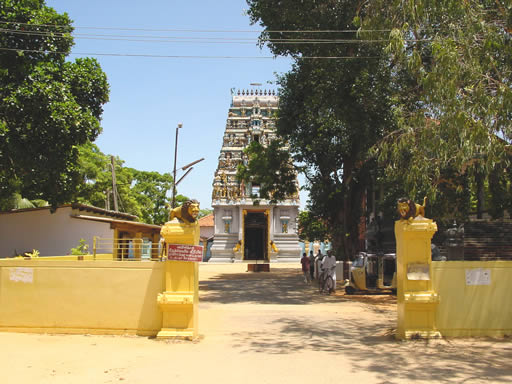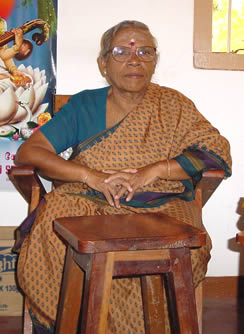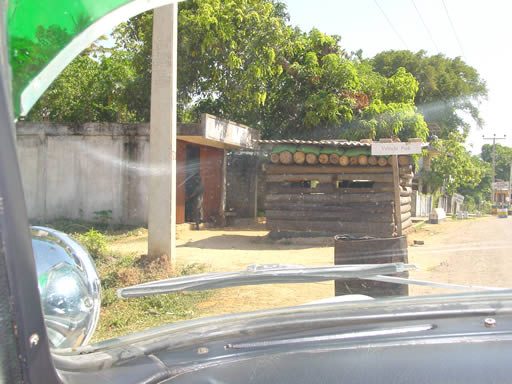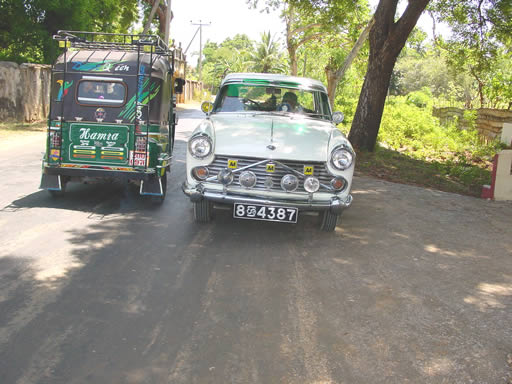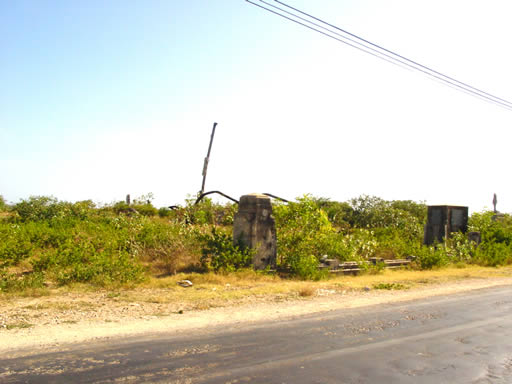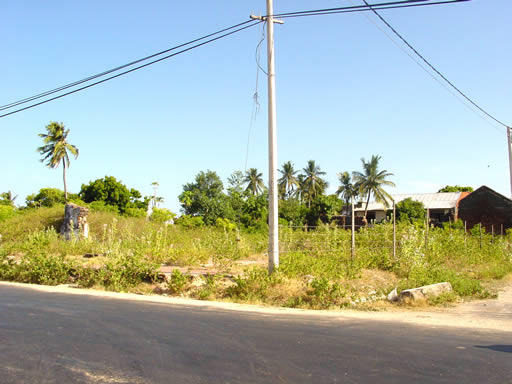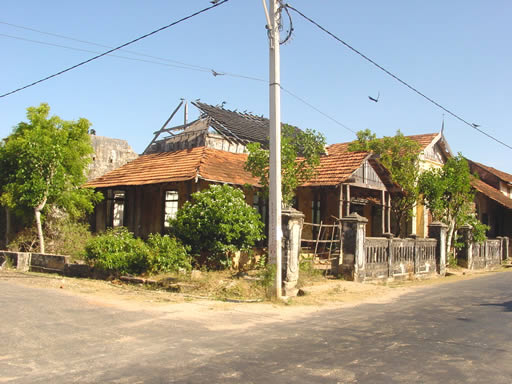|
MY FIRST VISIT TO THE VANNI EAGERNESS TO VISIT THE NORTH |
|||||||||||||||
|
Since the signing of the ceasefire agreement by the Sri Lankan Government and the LTTE in February 2002 a large number of Tamil Diaspora have visited Eelam. Let me hasten to add that they are not the only ones hurrying to Eelam. A sizeable number of Sinhalese, yes, Sinhalese from the south of Sri Lanka, have also visited the north as tourists, especially Jaffna, in recent months. Anyone will understand why those Tamil expatriates, born in Eelam, would want to visit Eelam. However, for the Sinhalese, it appears that it must be as a result of their recent realisation of the existence of a nation of people who live in that part of the island. Having left Eelam nearly forty years ago, I also took the opportunity of the present calm to visit my birthplace and other areas, of which I have fond memories. My birthplace is Tellipallai, in Jaffna, where I lived my first fourteen years and then our family moved to Vannarpannai, near Jaffna town. After three years in Vannarpannai I went on to Colombo for my university education over the next four years. Immediately afterwards I left Ceylon for the UK. My seventeen years in Jaffna were spent either with books or on the playing fields, usually in football (i.e. soccer, for my US friends), or cricket. I regret that I did not have the opportunity to visit and explore other areas of Eelam. My usual places of visit during those years were all on the route from Keerimalai to KKS and then straight along KKS road to Jaffna. Towns such as Vaddukoddai, Point Pedro etc. were just places from where other university colleagues came! Places such as Paranthan, Kilinochchi and Mankulam of Tamil Eelam were simply ‘stops’ on the train journey to Colombo! After ten years in the UK I left for Singapore, where I spent the next twenty years. I made frequent visits with my family to Sri Lanka, taking advantage of three vacations each year from my lecturing career in the universities. I could not undertake any extensive visit to Eelam during these occasions because my other family members, who still remained in Sri Lanka, had moved permanently to Colombo, and the other reason being the ongoing war in the north. Most of my visits to Sri Lanka usually ended up in Colombo and various other parts of the south. I had only very brief visits to Jaffna in 1967, 1969 and then for the last time, in 1981. So when the guns fell silent early this year I had been rearing to go to Jaffna. The opportunity came in July and I decided to travel by road from Colombo, as opposed to flying to Jaffna, because I wanted to visit parts of the Vanni as well. I sought help from friends for advice on the journey and accommodation, especially in the Vanni. I hired a vehicle in Colombo to drive me up to Vavuniya. The journey took five hours. After a brief stop in Vavuniya I was driven to Kilinochchi in another vehicle that my friend had arranged. This journey took about two hours including the stops, first at the Sri Lankan Army (SLA) checkpoint and after a couple hundred meters away, the LTTE’s entry point of Eelam at Omanthai. THAMILEELAM WELCOMES YOU This was my first recorded entry to Thamileelam, on July 8, 2002, when I was issued a document at the Omanthai entry point, in the form of a small booklet bearing No.1917, that was printed entirely in Tamil with the title ‘Thamileelam Unkallai Varavetkirathu’. This document is issued to former residents, presently holding foreign passports, re-entering Thamileelam. A very competent immigration officer assisted me in completing the document in Tamil, some of which read as follows:
I was keen to record my first entry to Thamileelam on my camera. However I was afraid that taking photos of officials at work might not be acceptable to them. While under the shed where our vehicle was being checked I was admiring the manner the roof of the shed was constructed, using locally available forest trees. I have at least a photo of the roof truss made with ingenious connections of tree branches. KILINOCHCHI When our vehicle reached Kilinochchi town centre a Thamileela policeman suddenly stopped us. It turned out that we had been driving at over 50 kmph in the area where the speed limit was 30 kmph. We were directed to a nearby compound. My driver joined the drivers of five other vehicles already in the compound. They were put through a strong five-minute talk, on the dangers of speeding in town centres, by a senior Thamileela policeman. We were then let off without having to pay any penalty. I was fortunate to get a very comfortable accommodation in Kilinochchi at a guesthouse where some of the officials of the Sri Lankan Monitoring Mission (SLMM) were housed. Two members of a team of about fifty, all from the Nordic countries, known simply as SLMM monitors, lived in that guesthouse during my visit. One gentleman was from Finland and the other from Denmark. They were friendly, good humoured and I learnt that they had served previously on other UN peacekeeping missions abroad. I was given a room allocated for a third Scandinavian monitor who was away on holiday. A young man, aged about twenty, took care of the residents in the guesthouse, taking the role of a butler. He was responsible to serve all meals, prepared at another location nearby and brought in. The meal times were punctual, breakfast at 8 am, lunch at 1pm and dinner at 8pm. He was also responsible to keep the house clean, take care of the guests’ laundry and other chores. A second young man cared for the garden and all matters relating to the exterior of the house, including the maintenance and operation of the generator that supplied power to the house. The guesthouse was spacious with a large reception/living room, spacious bedrooms with air-conditioners, and mosquito nets above each bed. There were two small permanently erected marquees for sitting out in the garden. I must hasten to add that this building is in complete contrast to the rest of the buildings/structures in that area. I learnt that this guesthouse was constructed, presumably to house the SLMM monitors, in a matter of six weeks during February/March this year at the location where a house had earlier existed but was completely damaged during the SLA occupation in the mid nineties THE VANNI AND ITS NEEDS On my second day in Kilinochchi I visited ‘Naduva Paniam’, meaning ‘Central Office’, that housed the offices of the Leader of the Political Wing of the LTTE, Mr S.P. Thamilselvan. Along with Mr Thamilselvan I also had the opportunity to meet Mr Thamilenthi. Mr Thamilenthi is a very senior and respected gentleman who is in charge of finance. During our discussions Mr Thamilenthi impressed upon me on the need to develop Vanni and to improve the quality of life of people in that region. An already undeveloped and impoverished Vanni was further devastated during the Sri Lankan military occupation in the mid nineties. Schools, public buildings and small-scale commercial and industrial premises that existed in the past were severely damaged or completely wiped out. People now live in atrocious conditions with practically no opportunities, living simply on the meagre proceeds from what they could grow in their gardens or fields. The teachers available in the schools are only capable of teaching subjects like Tamil Language and History. Though there are nearly two thousand unemployed graduates in Jaffna they do not have the required teachers in the Vanni. The Vanni requires teachers in English, Science and commercial subjects. As for skilled labour, someone who had used a chisel or a saw on a couple of occasions claims himself to be a carpenter. People with skills have gone seeking employment elsewhere in the country or overseas. Skill training is required in all vocations and trades. After our discussions Mr Thamilenthi made arrangements for a tour of the Vanni district. At 6 am the next morning Mr Thamilenthi and I left Kilinochchi in a Mitsubishi Pajero vehicle, driven by another young man, towards Mullaittivu, eastwards. We travelled largely through red dusty tracks, through settlements where people live in small huts amidst tiny gardens where essential vegetables were grown. When we reached Puthukkudiyiruppu (PTK for the SLMM) we came across youngsters, dressed in whites, walking or riding in twos or threes on bicycles along the red dusty tracks, towards school. We reached a large and very well maintained farm that was cared for by the LTTE in which various kinds of vegetables and fruits, including grapes, were grown. It appeared that Mr Thamilenthi had great interest in farms and farming methods. I received a few large sized ripe and tasty guava fruits. He said many farm owners had left the Vanni area and their lands are currently not cultivated. He wanted them either to return and tend their lands or lease the lands either to other cultivators or the LTTE so that suitable crops can be grown on them. We arrived in a house in PTK for our morning thosai breakfast that had been ordered earlier through the walkie-talkie. After breakfast we left southwards and visited two tanks, Udayarkattu Kulam and Muthuaiyankaddu Kulam and the irrigation schemes. I was impressed by the resources that were available for irrigation in this part of Thamileelam. LTTE had carried out regular maintenance and repairs to the tanks using meagre tools and equipment and without the heavy earth moving equipment that are usually required for such purposes. Mr Thamilenthi inspected some repair work that was being carried out during our visit. I could not help admire the massive and varied responsibilities Mr Thamilenthi had personally undertaken in that area. We returned back to PTK for our lunch and continued on our visits to two more tanks, the last one being the Iranamadu Kulam that is also known as Balasingham Airport. On our way back we stopped at Kilinochchi Central College. Nearly seventy percent of the original classrooms are currently unusable as a result of military onslaught on the school buildings. Using partly damaged rooms and some temporary sheds the Principal said that they continue their work for a student population of 1200, with an average class size being about 90.
The message is clear. The Vanni should be developed. Mr Thamilenthi had identified the following as of immediate importance:
1. New
Vocational, Technical and Commercial Colleges should be set up.
THE SLMM During the few days at Kilinochchi I had the opportunity to spend several hours chatting with the Finnish and Danish members of the SLMM who resided at the guesthouse. After inquiring about my background they were at ease and talked fairly freely. Though they had served in previous UN peacekeeping missions in other countries they admitted that the work in Sri Lanka had been less problematic. They cited two main reasons. One was that since the entire team came from the Nordic countries they have similar cultural background and hence got along very well as a team. This was apparently not the case during other missions abroad where the team consisted of members from diverse countries. The second was that they had not experienced serious violations from the two parties in Sri Lanka. Most of the complaints that were received turned out to be trivial and were largely police matters and not violations of the agreement.
They said laughingly
that during short visits from the Vanni to the south, in Colombo or other
towns, some Sinhalese were horrified when they learnt that they were
residing in the Vanni. Quite a few had asked them, ‘The Tigers!…… won’t
they kill you?’. They were generally pleased that peace between the LTTE
and the government forces was holding up well, with the exception of the
Navy who, they said, appeared to take orders directly from the President
and not from their Commander.
CHAVAKACHERI WECOMES YOU Driving from Kilinochchi we passed Paranthan and I was looking forward to seeing Elephant Pass. When we reached Iyakachi I reached for my map and realised we had passed Elephant Pass. I later learnt that no structures existed in the Elephant Pass area, not even the steel rail bridge that I used to see on my train journeys. There was also no sign of the railway track that used to run parallel to the road for several miles in that area. We reached Muhamalai just after Pallai. At Muhamalai we were leaving the territory under LTTE control and entering SLA controlled area. Travellers are expected to get down from the vehicles and go through the usual checks at these two points that were separated by a few hundred metres. However the SLMM monitor driving in his SLMM vehicle drove past, without stopping, at a slow speed, simply waving at the officers at these points. I sat quietly on the passenger seat without any facial reaction. After another fifteen km we reached a signboard that read ‘Chavakacheri Welcomes You’. The signboard appeared clean and fresh. I was moved. I thought that the Sri Lankan government had helped reconstruct Chavakacheri so quickly. That was not to be! When we reached the town centre the SLMM monitor slowed the vehicle on his own and brought it to a stop because he was certain that I would want to get down, inspect and take photographs of the totally wrecked town. As we drove along towards Jaffna town we noticed newly constructed bunkers every few hundred metres along the road. Using Palmyra tree trunks, new shiny green sand bags and asbestos roofing sheets the SLA appeared to have learnt to create the state-of-the-art bunkers. As a structural engineer I have a natural curiosity for observing buildings and structures. It appeared that over the past six months the 40,000 strong SLA men in Jaffna had switched their activities to erecting new structures to defend Jaffna. The Finnish monitor asked me quite suddenly, “Who are they protecting? How many Sinhalese live here?” What a pertinent question I thought. I did not answer his first question. My answer to the second was “practically none, except the SLA men themselves”. JAFFNA I had made previous arrangements for my accommodation in Jaffna. It was in a guesthouse along Kasturiar Road that was run by an organisation that also publishes a Tamil daily. When I reached the given address I was pleasantly surprised that the publication office and the adjoining guesthouse were two adjoining houses that belong to one of our friends, a doctor family, who now live overseas. I had a room with an en-suite bath at Rs750 per day. Meals could be ordered through the caretaker. The room apparently is their MD’s room and he was away. How lucky I have been all the while, I thought! My visit to Jaffna was largely nostalgic. My first trip was to Tellipallai, to the house I grew up from birth. I had been warned that the location is just south of the so-called high security zone of SLA, many houses had been destroyed and that there was no habitation in that area for several years. I also learnt that some squatters, not necessarily the rightful owners, had recently moved in to some houses in that area. Our house was constructed in the early nineties using chalk, limestone and rocks with walls about twenty-four inches thick. What I found was a jungle. The building had been completely removed from the ground. I waded through the overgrowth and located only one original item that still remained. It was the rectangular concrete tub that was adjacent to our well. We used to fill it with water, have baths, swim and whatever. It looked much smaller than I remembered! The adjoining well had been completely filled-up and there was no sign of anything else. Keerimalai, my favourite haunt during my young days, practically every Sunday with my family, was my next item on the agenda. My driver said that though it is within the high security zone of the SLA we could visit Keerimalai if we insisted that we wanted to visit the Sivan Temple there. So at the Tellippallai SLA checkpoint we were required to leave our passport/ ID and camera and an army officer joined us in the car as an escort with his AK47. Driving towards Keerimalai passing the KKS cement factory it was a pathetic scene all the way. One could see only badly damaged houses with overgrowth all the way. Not a soul in sight except some SLA camps. The huge cement factory building, standing there like a monument, with no activity over several years. I visited the Sivan temple and had a quick dip in the tank under the watchful eyes of the SLA man. The sea was out of bounds with barbed wire erected along the coast.
JAFFNA TOWN Just before I embarked on my journey many requests came from relatives and friends living outside Eelam. Many had wanted me to visit their homes/properties in Jaffna and to return with latest reports. This turned out to be very arduous as I had difficulty identifying some of them. I did my best and brought several photos and reports on many of them. Reports by other recent visitors to Jaffna have been published and it is not useful repeating what had already been reported. However I will try and give my impression in a few words. People in Jaffna appeared tougher, generally very engaged and purposeful. No one appeared to idle. The peace had given them access to goods and items they did not have earlier. The unease and the serious look in their faces can be attributed largely to the presence of the armed forces. It is the expression of the lack of freedom. The armed forces seem to be everywhere in Jaffna. Though they are largely confined to their barracks, their presence is felt everywhere. Camps have been created in populated areas by erecting a fence round five or six adjoining houses whose owners have either vacated and gone away or driven away. So many people live next door to army camps. Repairs to damaged temples and houses have commenced and these should go on. But I do not foresee any major infrastructure redevelopment work or large-scale investments undertaken until the armed forces leave Jaffna completely. Though many houses, temples and public institutions have been badly damaged what was most heartbreaking to me amongst those I had visited was the destruction of the Jaffna Town Hall and the Court Houses. They have been removed completely from the earth. The two photos show the locations where Jaffna Town Hall Buildings and the Court Houses stood.
The next photo shows the house of a former mayor, my wife’s grandfather, who laid the foundation stone for the Town Hall building. This house is situated not too far away at First Cross Street. My wife had asked me to visit and inspect the condition of this house. After spending a week in Jaffna I returned to Colombo on a flight from Palali to Ratmalana.
SOME THOUGHTS AFTER MY VISIT It is only natural that people develop a kind of love and affection for the place of birth and the area one grew up in. This affection appears to intensify when one is long away. Several plans are often made for the ultimate return, whether it is for a short visit or for a return for good. Whatever thoughts and plans I had prior to my visit have been extensively revised after my short visit. This is as a result of visiting a larger part of our homeland and not merely Jaffna. I have tried to assess our way of life back in the past and see where we had gone wrong. I had often asked myself why so many of us had to leave the country of our birth and had to remain overseas. Could we have avoided this large exodus? Is it largely because of that singular objective in life for all of us, ‘to get good A Levels, go to University and get a job in Colombo’? Did we try to create jobs in our homelands? Did we encourage entrepreneurships? Did we try and create industries in our areas? We often blamed the government for not setting up factories in the north (save the cement factory). Isn’t it because we did not want to work in factories or in other industries in the Northeast? If we had created a wealthy Northeast who cares about ‘Sinhala Only’ and the south. We could all have had jobs in the Northeast. If we had not neglected but developed and utilised most areas of our homelands we could have prevented the Sinhala colonisation of our lands. The only ‘industry’ I could notice in Jaffna is the ‘Tuition Industry’. Signboards advertising ‘Tuition Classes’ appear outside houses every few hundred metres along the KKS Road. Education is important, but is that our only priority? I am sure all the keen subscribers to these advertisements are looking for university places and jobs overseas. Why should everyone want to leave? Perhaps the time has come to rectify our mistakes. My appeal is for the Diaspora to help develop our homeland so that our people would want to live there, not wanting to leave. We should also help create conditions attractive enough for the return of the Diaspora. In this respect I would go back to what Mr Thamilenthi had outlined. Many of the items in his agenda have to be addressed by the Sri Lankan Government and through them the development aid agencies. These are being put forward through appropriate channels and there are visible activities recently with government officials and development agencies visiting Kilinochchi. There is however a very important role that the Diaspora could play. This is in the areas of investments, assistance in setting up small industries and creation of jobs. The Vanni has great potential and there is a new focus on its development. Perhaps a body calling itself ‘The Vanni Development Authority’ should be set up. This body could act as a guiding/regulatory authority for various developmental projects and in addition, act as a one-stop-shop for potential investors. This authority could handle all enquires and provide information on incentives and guarantees to the potential investor.
|
|||||||||||||||
